计数
无根树有序点:$n^{n-2}$
有根数有序点:$n^{n-2}*n$
$CR: H(n,m)=(n+m-1)!/((n-1)!m!)$
二叉树:$n_0=n_2+1$
群: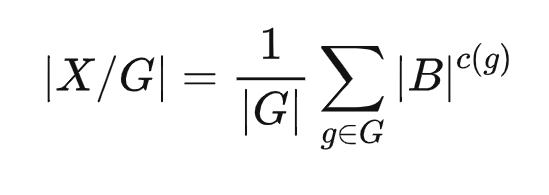
阅读程序(问题解决)
归并排序第k小
#include <bits/stdc++.h>
using namespace std;
int solve(int *a1, int *a2, int n, int k) {
int left1 = 0, right1 = n - 1;
int left2 = 0, right2 = n - 1;
while (left1 <= right1 && left2 <= right2) { // 双指针
int m1 = (left1 + right1) >> 1;
int m2 = (left2 + right2) >> 1;
int cnt = m1 + m2; // 计数
if (a1[m1]<=a2[m2]) {
if (cnt < k) left1 = m1 + 1; // 左扩展
else right2 = m2 - 1; // 右收敛
} else {
if (cnt < k) left2 = m2 + 1;
else right1 = m1 - 1;
}
}
if (left1 > right1) { // 左扩展完
if (left1 == 0) {
return a2[k - 1]; // 左无
} else {
int x = a1[left1 - 1], y = a2[k - left1 - 1]; // 比较
return std::max(x, y);
}
} else {
if (left2 == 0) {
return a1[k - 1];
} else {
int x = a2[left2 - 1], y = a1[k - left2 - 1];
return std:: max(x, y);
}
}
}
(2)(容器分水) 有两个容器,容器 1 的容量为为 a 升,容器 2 的容量为 b 升;同时允许下列的三种操作,分别为:
FILL(i):用水龙头将容器 (∈1,2) 灌满水;
DROP(i):将容器 i 的水倒进下水道;
POUR(i,j):将容器 i 的水倒进容器 j(完成此操作后,要么容器 j 被灌满,要么容器 i 被清空)。
求只使用上述的两个容器和三种操作,获得恰好 c 升水的最少操作数和操作序列。上述 a、b、c 均为不超过 100 的正整数,且 c≤max{a,b}。
试补全程序。
#include <bits/stdc++.h>
using namespace std;
const int N = 110;
int f[N][N];
int ans;
int a, b, c;
int init;
int dfs(int x, int y) {
if (f[x][y] != init)
return f[x][y];
if (x == c || y == c)
return f[x][y] = 0;
f[x][y] = init - 1;
f[x][y] = min(f[x][y], dfs(a, y) + 1);
f[x][y] = min(f[x][y], dfs(x, b) + 1);
f[x][y] = min(f[x][y], dfs(0, y) + 1);
f[x][y] = min(f[x][y], dfs(x, 0) + 1);
int t = min(a - x, y);
f[x][y] = min(f[x][y], dfs(x + t, y - t) + 1);// a倒b
t = min(x, b - y);
f[x][y] = min(f[x][y], dfs(x - t, y + t) + 1);// b倒a
return f[x][y];
}
void go(int x, int y) { // 路径回溯
if (x == c || y == c) //结束
return;
if (f[x][y] == dfs(a, y) + 1) {
cout << "FILL(1)" << endl;
go(a, y);
} else if (f[x][y] == dfs(x, b) + 1) {
cout << "FILL(2)" << endl;
go(x, b);
} else if (f[x][y] == dfs(0, y) + 1) {
cout << "DROP(1)" << endl;
go (0, y);
} else if (f[x][y] == dfs(x, 0) + 1) {
cout << "DROP(2)" << endl;
go(x, 0);
} else {
int t = min(a - x, y);
if(f[x][y] == dfs(x + t, y - t) + 1) {
cout << "POUR(2,1)" << endl;
go(x + t, y - t);
} else {
t = min(x, b - y);
if (f[x][y] == dfs(x - t, y + t) + 1) {
cout << "POUR(1,2)" << endl;
go(x - t, y + t);
} else
assert(0);
}
}
}
int main() {
cin >> a >> b >> c;
ans = 1 << 30;
memset(f, 127, sizeof f);
init = **f;
if ((ans = dfs (0, 0)) == init - 1)
cout << "impossible";
else {
cout << ans << endl;
go (0, 0);
}
}
四毛子
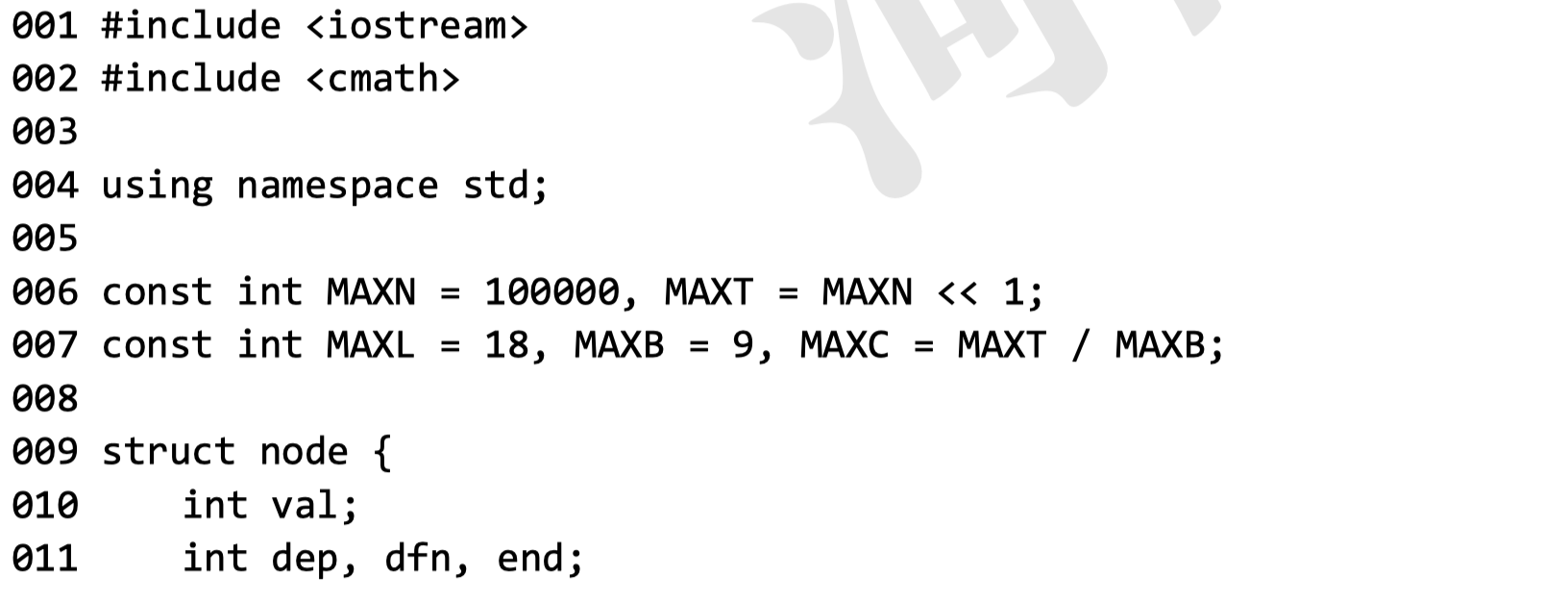
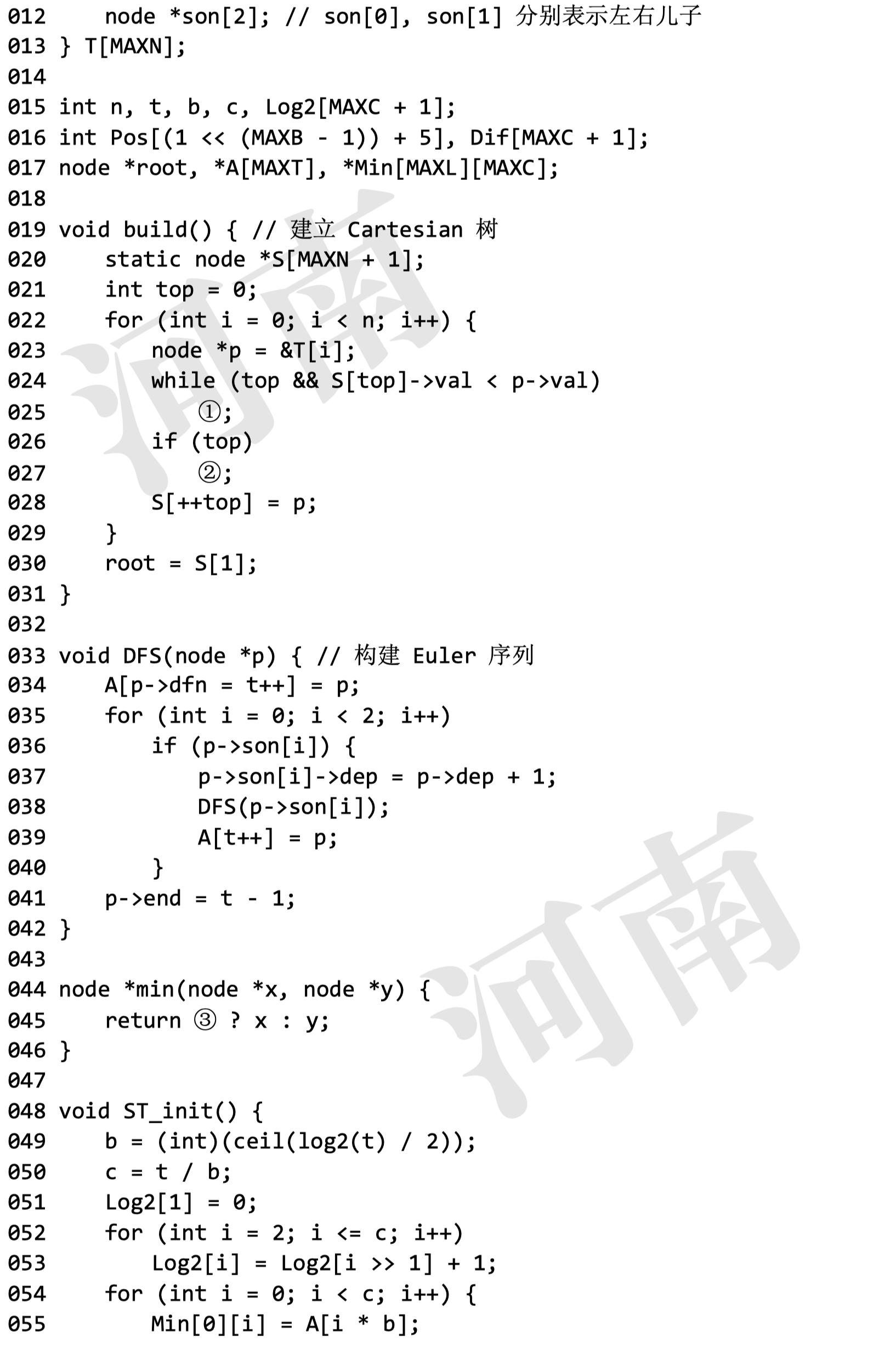
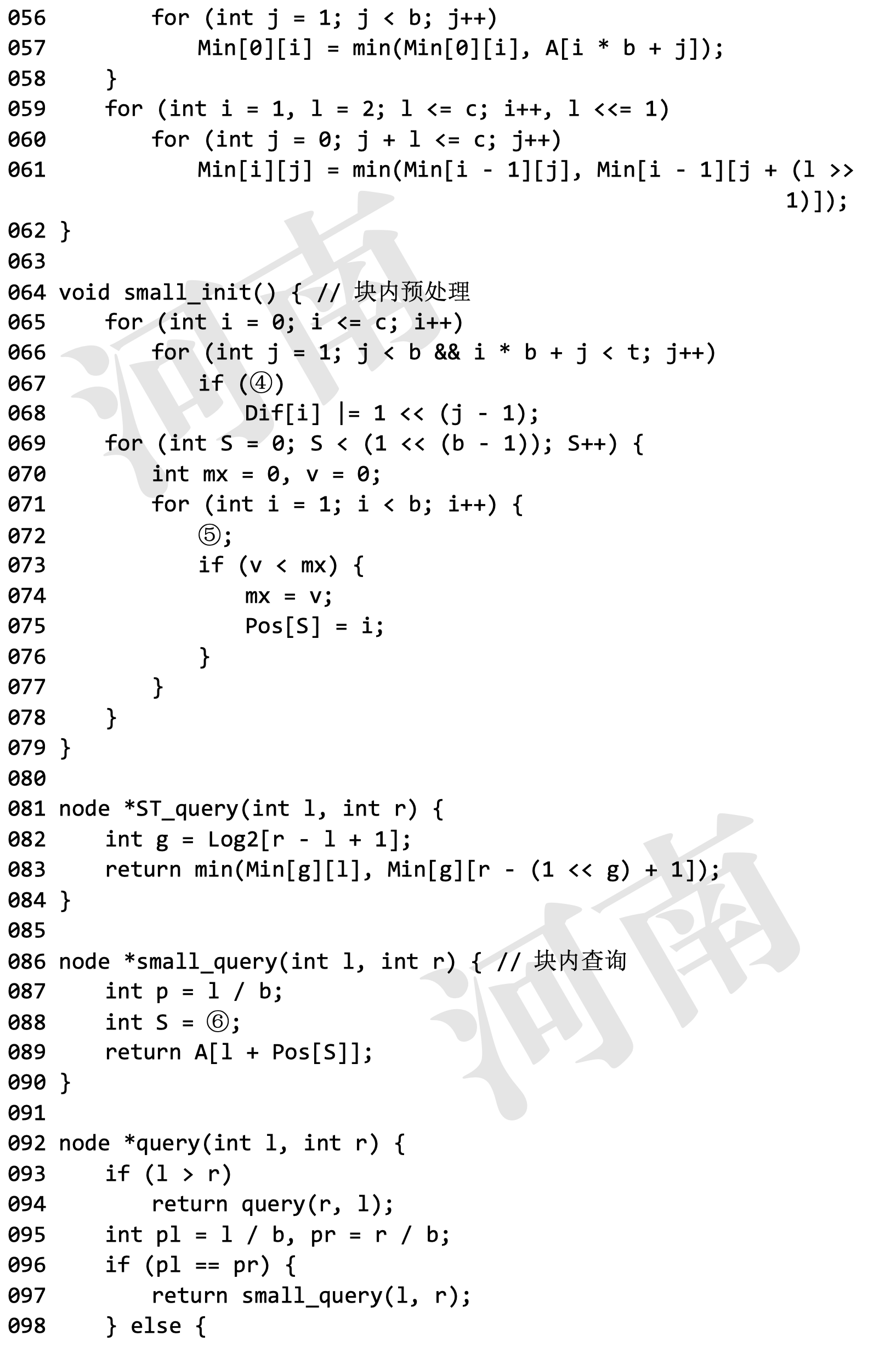
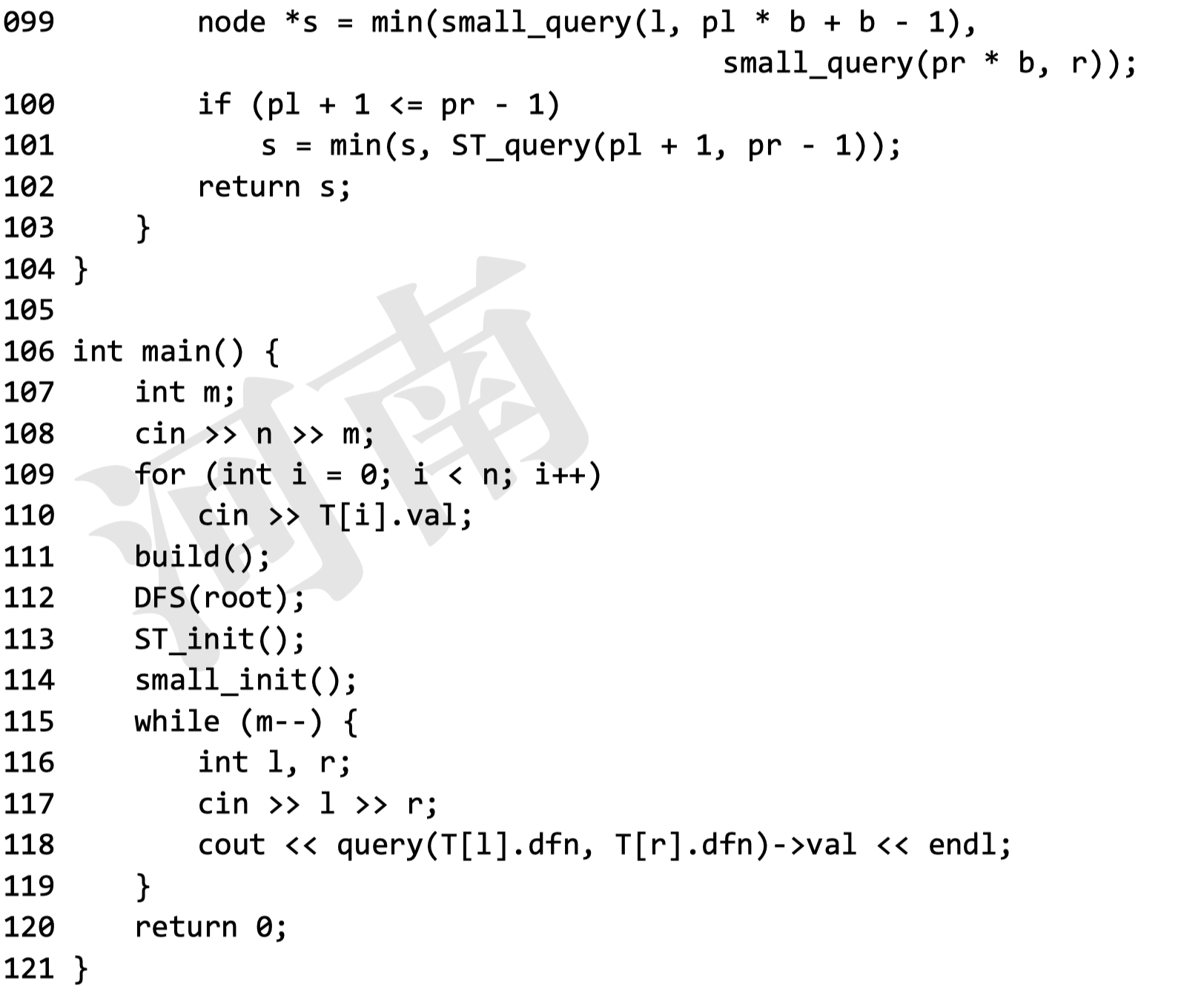
#include <stdio.h>
#include <math.h>
#define MAXN 20000000
#define MAXT (MAXN<<1)
#define MAXL 18
#define MAXB 9
#define MAXC (MAXT/MAXB)
struct node{
int val, dep, dfn, end;
struct node *son[2];//son[0],son[1]分别表示左右儿子
}T[MAXN], *root, *id[MAXT], *Min[MAXL][MAXC];
struct node*min(struct node *x, struct node *y){return x->dep<y->dep?x:y;}
int n, t, b, c, Log2[MAXC+1];
int Pos[(1<<(MAXB-1))+5], Dif[MAXC+1];
void build(){//建立Cartesian树
static struct node*S[MAXN+1];//单调栈
int top=0;
for(int i=0; i<n; i++){
struct node *p=&T[i];
while(top&&S[top]->val<p->val)
p->son[0]=S[top--];
if(top) S[top]->son[1]=p;//右儿子在最后才连,这样就没必要把之前 pop 掉的儿子修改,
S[++top]=p;
}
root=S[1];
}
void DFS(struct node *p){//构建 Euler序列(dfs 环游序)
id[p->dfn=t++]=p;
for(int i=0; i<2; i++)
if(p->son[i]){
p->son[i]->dep=p->dep+1;
DFS(p->son[i]);
id[t++]=p;
}
p->end=t-1;
}
void ST_init(){//大块 ST 表预处理
b=(int)(ceil(log2(t)/2));//块长logn/2
c=t/b;//总共多少块
Log2[1]=0;
for(int i=2; i<=c; i++)
Log2[i]=Log2[i>>1]+1;
for(int i=0; i<c; i++){//先找出每一块内部最小值
Min[0][i]=id[i*b];
for(int j=1; j<b; j++)
Min[0][i]=min(Min[0][i], id[i*b+j]);
}
for(int i=1, l=2; l<=c; i++, l<<=1) //ST 表
for(int j=0; j+l<=c; j++)
Min[i][j]=min(Min[i-1][j], Min[i-1][j+(l>>1)]);
}
void small_init(){//块内预处理
for(int i=0; i<=c; i++)
for(int j=1; j<b&&i*b+j<t; j++)//记录差分数组 Dif
if(id[i*b+j]->dep<id[i*b+j-1]->dep) Dif[i]|=1<<(j-1);
for(int S=0; S<(1<<(b-1)); S++){
//计算状态 S 的最大值应该落在第几个位置
int mx=0,v=0;
for(int i=1; i<b; i++){
v+=(S>>(i-1)&1)?-1:1;
if(v<mx) mx=v, Pos[S]=i;
}
}
}
struct node*ST_query(int l,int r){//对于整块使用 ST 表
int g=Log2[r-l+1];
return min(Min[g][l],Min[g][r-(1<<g)+1]);
}
struct node*small_query(int l, int r){//块内查询
int p=l/b;//第几个块
int S=(Dif[p]>>(l-p*b))&((1<<(r-l))-1);
//将 [L[p], l-1], [r+1, R[p]] 多出来的清理掉
return id[l+Pos[S]];
}
struct node*query(int l, int r){
if(l>r) return query(r,l);
int pl=l/b, pr=r/b;
if(pl==pr) return small_query(l,r);//同一块内
else{
struct node *s=min(small_query(l, pl*b+b-1), small_query(pr*b,r));//询问散块
if(pl+1<=pr-1) s=min(s, ST_query(pl+1,pr-1));//中间的整块
return s;
}
}
int main(){
int m;
scanf("%d%d", &n, &m);
for(int i=0; i<n; i++)
scanf("%d", &T[i].val);
build();
DFS(root);
ST_init();
small_init();
while(m--){
int l,r;
scanf("%d%d", &l, &r);
printf("%d\n", query(T[l-1].dfn, T[r-1].dfn)->val);
}
return 0;
}
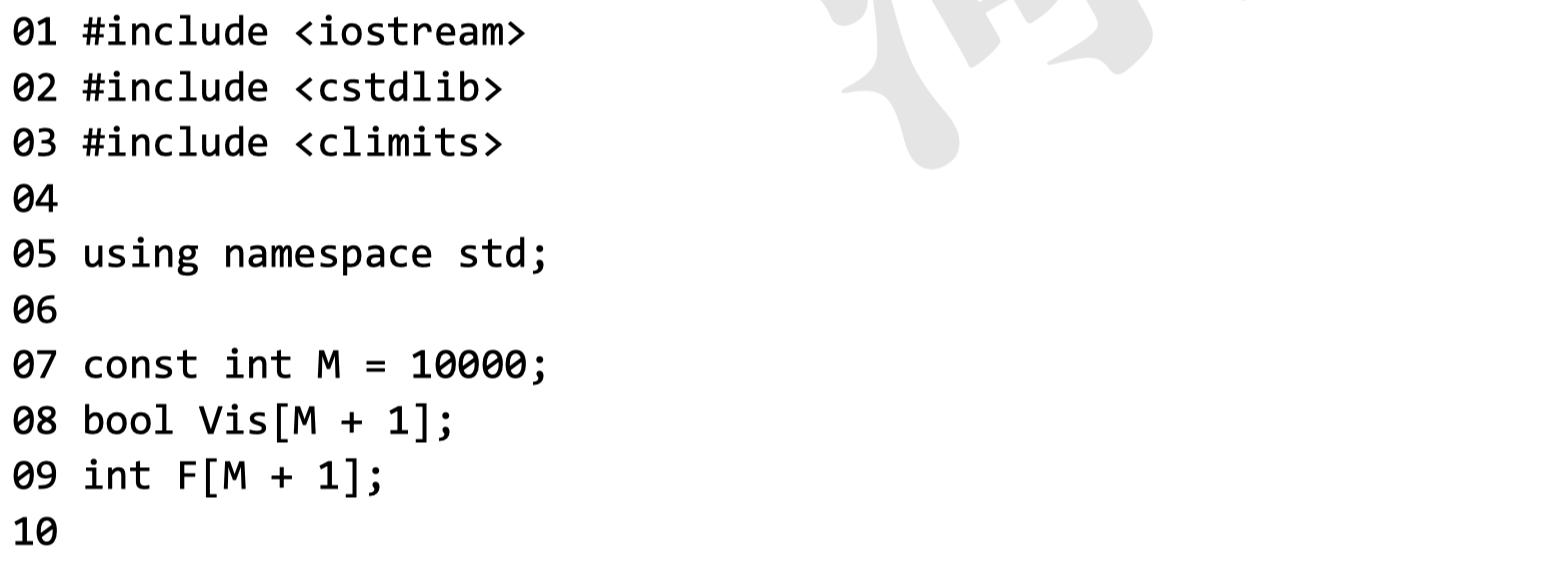
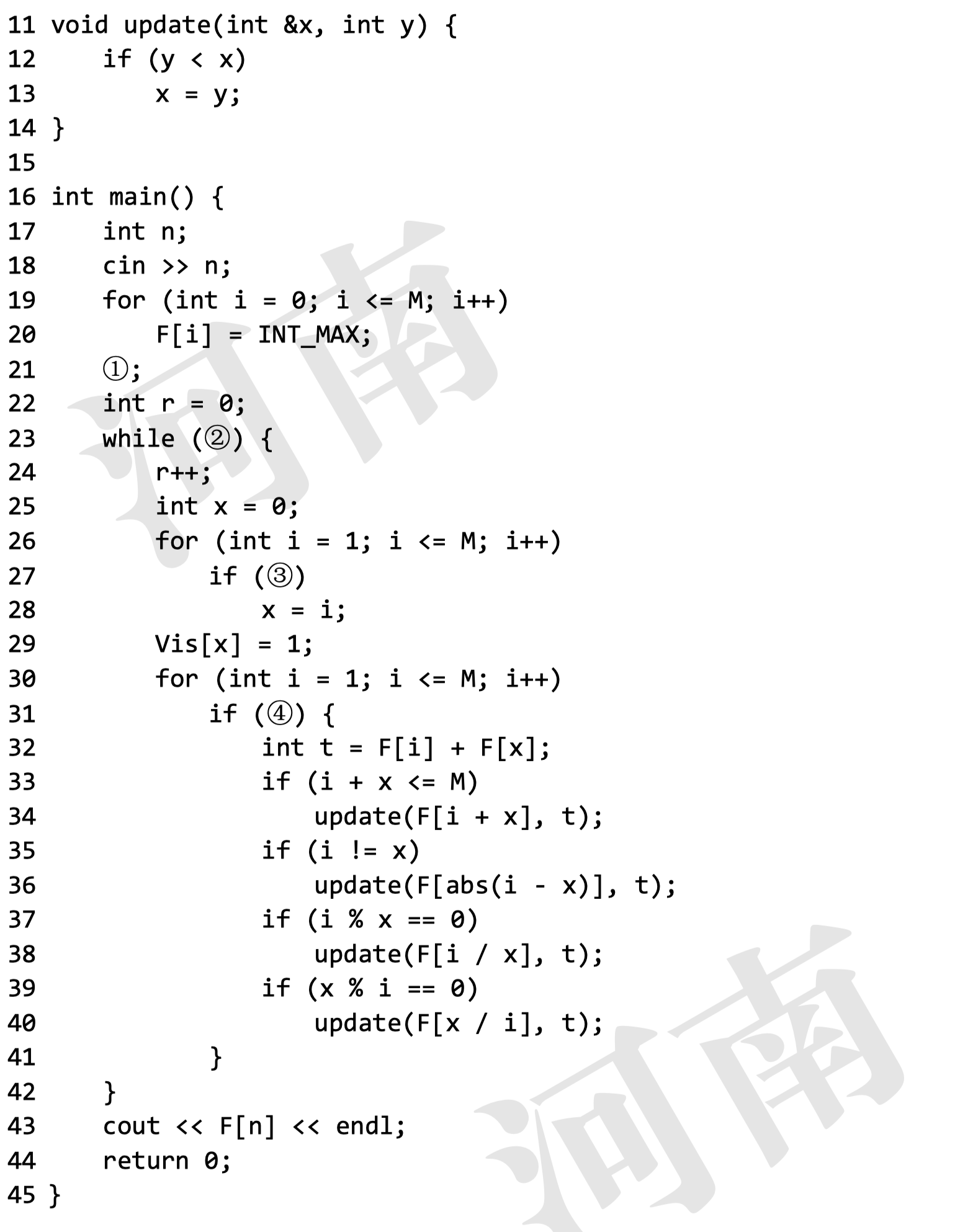
虽说这类题最好用dfs做,但本算法具体来说就是最短路迭代。
#include <iostream>
using namespace std;
typedef long long LL;
const int MAXN = 40000, M = 16, B = M >> 1, MS = (1 << B) - 1;
const LL INF = 1000000000000000LL;
LL Max[MS + 4][MS + 4];
int w(int x)
{
int s = x;
while(x)
{
x ^= x &(x ^ (x - 1));
s++;
}
return s;
}
void to_max(LL &x, LL y)
{
if(x < y)
x = y;
}
int main()
{
int n;
LL ans = 0;
cin >> n;
for(int x = 0; x <= MS; x++)
for(int y = 0; y <= MS; y++)
Max[x][y] = -INF;
for(int i = 1; i <= n ; i++)
{
LL a;
cin >> a;
int x = a >> B , y = a & MS;
LL v = 0;
for(int z = 0; z < = MS; z++)
to_max(v, Max[x][z] + w(y ^ z));
for(int z = 0; z < = MS; z++)
to_max(Max[z][y], v + w((x ^ z) << B));
to_max(ans , v);
}
cout << ans << endl;
return 0;
}
DP优化思想,分部处理。
#include <cstdio>
using namespace std;
const int maxn = 1005;
int n, B, w[maxn], v[maxn];
int gcd(int u, int v) {
if (v == 0)
return u;
return gcd(v, u % v);
}
void print(int w, int v) {
int d = gcd(w, v);
w = w / d;
v = v / d;
if (v == 1)
printf("%d\n", w);
else
printf("%d/%d\n" w, v);
}
void swap(int &x, int &y) {
int t = x; x = y; y = t;
}
int main() {
scanf("%d %d" &n, &B);
for (int i = 1; i <= n; i ++) {
scanf("%d %d", &w[i], &v[i]);
}
for (int i = 1; i < n; i ++)
for (int j = 1; j < n; j ++)
if (w[j] * v[j+1] < w[j+1] * v[j]) {
swap(w[j], w[j + 1]);
swap(v[j], v[j + 1]);
}
int curV, curW;
if (v[1] <= B) {
curV = v[1]; curW = w[1];
} else {
print(B * w[1] , v[1]);
return 0;
}
for (int i = 2; i <= n; i ++)
if (curV + v[i] <= B) {
curV += v[i];
curW += w[i];
} else {
print (curW * v[i] + (B - curV) * w[i], v[i]);
return 0;
}
print(curW, 1);
return 0;
}
分数背包(贪心)
#include <cstdio>
#include<algorithm>
using namespace std;
const int maxn = 64;
int n, m;
int a[maxn], b[maxn];
unsigned long long status, trans;
bool win;
int main(){
scanf("%d%d", &n, &m);
for (int i = 0; i < n; ++i)
scanf("%d%d", &a[i], &b[i]);
for(int i = 0; i < n; ++i)
for(int j = i + 1; j < n; ++j)
if (a[i] > a[j]){
swap(a[i], a[j]);
swap(b[i], b[j]);
}
status = ~0ull^1;
trans = 0;
for(int i = 1, j = 0; i <= m; ++i){
while (j < n && a[j] == i){
trans |=1ull << (b[j] - 1);
++j;
}
win = ~status & trans;
status = status << 1 ^ win;
}
puts(win ? "Win" : "Loss");
return 0;
}
通过二进制压缩状态处理的博弈论。
#include<cstdio>
using namespace std;
const int maxn = 1001;
int n;
int cnt[maxn];
int child [maxn][maxn];
int unlock[maxn];
int threshold[maxn], bonus[maxn];
int points;
bool find(){
int target = -1;
for (int i = 1; i <= n; ++i)
if(unlock[i] == 0 && points >= threshold[i]){
target = i;
break;
}
if(target == -1)
return false;
unlock[target] = -1;
points += bonus[target];
for (int i = 0; i < cnt[target]; ++i)
unlock[child[target][i]] -= 1;
return true;
}
int main(){
scanf("%d%d", &n, &points);
for (int i = 1; i <= n; ++i){
cnt[i] = 0;
scanf("%d%d", &threshold[i], &bonus[i]);
}
for (int i = 1; i <= n; ++i){
int m;
scanf("%d", &m);
unlock[i] = m;
for (int j = 0; j < m; ++j){
int fa;
scanf("%d", &fa);
child[fa][cnt[fa]] = i;
++cnt[fa];
}
}
int ans = 0;
while(find())
++ans;
printf("%d\n", ans);
return 0;
}
拓扑问题

